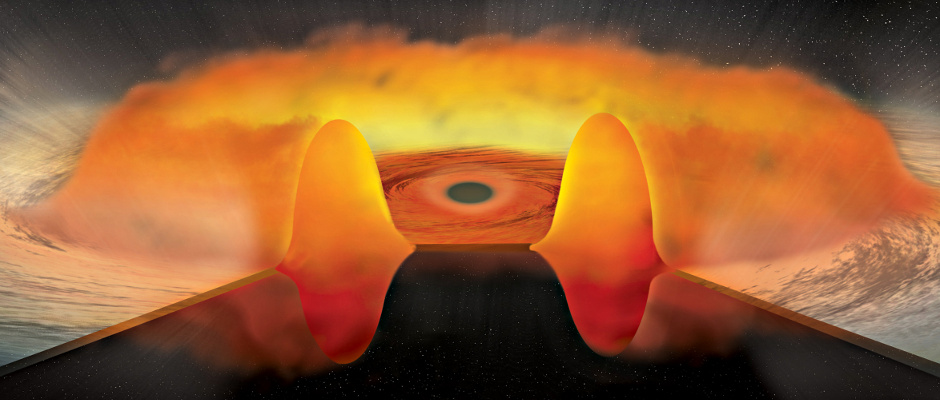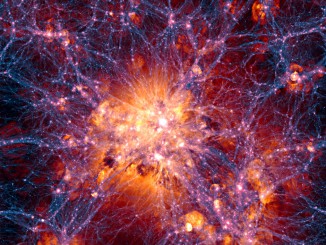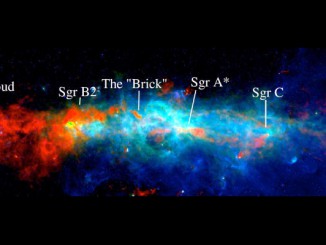
This new result suggests that some quasars are even more adept at devouring material than scientists previously knew.
“Even for famously prodigious consumers of material, these huge black holes appear to be dining at enormous rates, at least five to ten times faster than typical quasars,” said Bin Luo of Penn State University in State College, Pennsylvania, who led the study.
Luo and his colleagues examined data from Chandra for 51 quasars that are located at a distance between about 5 billion and 11.5 billion light-years from Earth. These quasars were selected because they had unusually weak emission from certain atoms, especially carbon, at ultraviolet wavelengths. About 65% of the quasars in this new study were found to be much fainter in X-rays, by about 40 times on average, than typical quasars.
“This picture fits with our data,” said co-author Jianfeng Wu of the Harvard-Smithsonian Center for Astrophysics, in Cambridge, Massachusetts. “If a quasar is embedded in a thick donut-shaped structure of gas and dust, the donut will absorb much of the radiation produced closer to the black hole and prevent it from striking gas located further out, resulting in weaker ultraviolet atomic emission and X-ray emission.”
The usual balance between the inward pull of gravity and the outward pressure of radiation would also be affected.
“More radiation would be emitted in a direction perpendicular to the thick disc, rather than along the disc, allowing material to fall in at higher rates,” said co-author Niel Brandt, also of Penn State University.
The important implication is that these “thick-disc” quasars may harbour black holes growing at an extraordinarily rapid rate. The current study and previous ones by different teams suggest that such quasars might have been more common in the early universe, only about a billion years after the Big Bang. Such rapid growth might also explain the existence of huge black holes at even earlier times.



